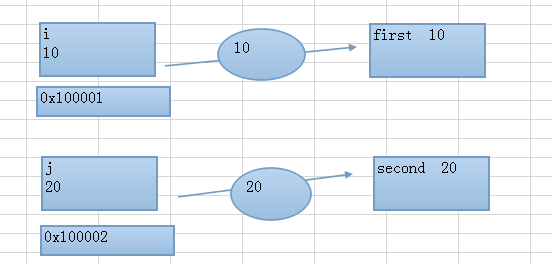在开发 Web 应用时,我们经常需要从 URL 中提取参数值,比如获取用户的查询条件、跟踪统计信息等。本文将详细介绍几种在 JavaScript 中获取 URL 参数值的方法,包括现代浏览器支持的 URLSearchParams、正则表达式解析以及自定义函数解析方案,并讨论各自的优缺点及适用场景。
1. 了解 URL 参数
一个 URL 的参数部分通常位于问号(?)之后,例如:
|
1 |
https://example.com/page?name=alice&age=25 |
在上面的 URL 中,name 和 age 都是参数,值分别为 alice 和 25。获取这些参数在前端开发中非常常见。
2. 使用 URLSearchParams 获取参数值
2.1 什么是 URLSearchParams?
ES6 引入了 URLSearchParams 接口,用于方便地解析和操作 URL 查询字符串。该接口提供了一系列方法,例如 get()、has()、append() 等,让我们能够快速获取和操作参数。
2.2 示例代码
|
1 2 3 4 5 6 7 8 9 10 |
// 假设当前 URL 为:https://example.com/page?name=alice&age=25 // 获取查询字符串(问号后面的部分) const queryString = window.location.search; // 创建 URLSearchParams 实例 const params = new URLSearchParams(queryString); // 获取单个参数的值 const name = params.get('name'); // "alice" const age = params.get('age'); // "25" console.log('Name:', name); console.log('Age:', age); |
2.3 优缺点
优点:
- 简洁直观,代码可读性高。
- 提供了丰富的方法来操作参数。
缺点:
- IE 不支持该接口(可通过 polyfill 解决)。
3. 使用正则表达式获取参数值
对于不支持 URLSearchParams 的浏览器或特殊需求,可以使用正则表达式来提取 URL 参数值。
3.1 示例代码
|
1 2 3 4 5 6 7 8 9 10 |
function getQueryParam(param) { const url = window.location.href; // 构造正则表达式,匹配 ? 或 & 后面跟随的参数名称和其值 const regex = new RegExp('[?&]' + param + '=([^&#]*)', 'i'); const result = regex.exec(url); return result ? decodeURIComponent(result[1]) : null; } // 假设 URL 为:https://example.com/page?name=alice&age=25 console.log(getQueryParam('name')); // "alice" console.log(getQueryParam('age')); // "25" |
3.2 分析
- 该方法通过正则表达式匹配参数名和参数值。
- 使用 decodeURIComponent 解码 URL 编码字符。
- 可在不支持 URLSearchParams 的环境下使用。
4. 自定义解析函数
如果需要更加灵活地处理 URL 参数(比如支持数组参数、重复参数等),可以编写自定义函数来解析查询字符串。
4.1 示例代码
|
1 2 3 4 5 6 7 8 9 10 11 12 13 14 15 16 17 18 19 20 21 22 23 24 25 26 27 28 29 |
function parseQueryString(queryString) { const params = {}; // 移除问号 queryString = queryString.replace(/^\?/, ''); // 分割成键值对数组 const pairs = queryString.split('&'); pairs.forEach(pair => { if (!pair) return; const [key, value] = pair.split('='); const decodedKey = decodeURIComponent(key); const decodedValue = value ? decodeURIComponent(value) : ''; // 如果键已经存在,则将其转换为数组 if (params[decodedKey]) { if (Array.isArray(params[decodedKey])) { params[decodedKey].push(decodedValue); } else { params[decodedKey] = [params[decodedKey], decodedValue]; } } else { params[decodedKey] = decodedValue; } }); return params; } // 示例:URL 为:https://example.com/page?name=alice&age=25&hobby=reading&hobby=swimming const queryString = window.location.search; const queryParams = parseQueryString(queryString); console.log(queryParams); // 输出: { name: "alice", age: "25", hobby: ["reading", "swimming"] } |
4.2 分析
- 该函数先去除 URL 中的问号,再以 & 分割所有键值对。
- 每个键值对使用 = 分割,并解码编码后的字符。
- 如果同一个参数出现多次,则将其值转换为数组存储,方便处理多个值的情况。
5. 小结与注意事项
- 推荐使用 URLSearchParams:在支持该接口的现代浏览器中,它是获取 URL 参数最简单、最安全的方式。
- 正则表达式方法:适合需要兼容老旧浏览器或特定需求时使用,但代码可读性略低。
- 自定义解析函数:灵活性更高,适用于需要特殊处理(如数组参数)的场景,但需要更多测试以确保兼容性和健壮性。
- 编码与解码:无论哪种方法,都要注意 URL 编码问题,使用 encodeURIComponent 和 decodeURIComponent 进行编码转换。
通过本文,你可以根据项目需求选择最合适的方法来获取 URL 参数值。希望这篇文章能为你在 Web 开发中处理 URL 参数问题提供有用的参考和解决方案!



